- Home
- Graham Hancock
Underworld Page 24
Underworld Read online
Page 24
Since Pliny and Solinus drew on reports sent back by Rome’s ambassadors to India’s Maurya court,47 their chronology is regarded as first-hand information and is thought to transmit an accurate representation of ancient Indian beliefs about the past. Mitchiner is therefore intrigued by the fact
that the date of 6777 BC which is given … by Pliny and Solinus is only a single century in advance of the date of 6676 BC which is suggested in the Indian texts to represent the starting point of Indian chronology, as based upon the Era of the Seven Rsis. We may therefore conclude that such a date was indeed regarded – from at least the 4th century BC – as being a starting point of Indian chronology.48
Connections
I already knew that it was the ancient function of Rishis – Sages, Seers – to sustain the institution of kingship on earth. It was to this end, and in order to preserve and repromulgate the Vedas, that the Seven Sages were said to have travelled to the Himalayas with Father Manu in the time of the great flood.
Now I also knew that an Indian calendar system identified with the Seven Sages, with a father figure and with a line of kings, had a start date of around 6700 BC – a date that fell well within the time-frame of the greatest floods the earth has known in the past 125,000 years.
Last but not least, I could not forget that 6700 BC is extremely close to the date at which the first settlement of the remarkable site of Mehrgarh in Baluchistan took place – a site where the systematic planting and cultivation of cereals and vegetables, as well as systematic animal husbandry, was apparently introduced into India for the first time.
Inevitably I began to wonder if all these things might not in some way be connected.
8 / The Demon on the Mountain and the Rebirth of Civilization
Why humans came to domesticate plants and animals at some particular point in history remains somewhat of a mystery. It seems to be a phenomenon that developed just after the opening of the Holocene in several regions of both the Old and New Worlds. Why it did not occur earlier is not known.
Professor Gregory Possehl, University of Pennsylvania, 1999
Geological record indicates that during Late Pleistocene glaciation, waters of the Himalaya were frozen and that in place of rivers there were only glaciers, masses of solid ice … When the climate became warmer, the glaciers began to break up and the frozen water held by them surged forth in great floods, inundating the alluvial plain in front of the mountains … No wonder the early inhabitants of the plains burst into song praising Lord Indra for breaking up the glaciers and releasing waters which flowed out in seven mighty channels [Sapta Sindhu). The analogy of a slowly-moving serpent (Ahi) for describing the Himalayan glacier is most appropriate … With the hindsight we possess as geologists, we at once see that the phenomenon described in the Rig Veda was no idle fancy but a real natural event of great significance connected with the break-up of Himalayan glaciers and the release of pent-up waters in great floods.
B. P. Radhakrishna, Geological Society of India, 1999
In its study and interpretation of the past, archaeology depends heavily on material evidence produced at excavations. The dependence becomes total when the culture being investigated has left no documents or inscriptions to tell us about itself.
The Indus-Sarasvati civilization was a literate culture, but the archaeological interpretation of it has been strictly limited to excavated material remains and has never been able to draw upon the civilization’s own texts. This is because all attempts to decipher the enigmatic ‘Harappan’ script have failed, and because (at least until very recently) the Sanskrit Vedas were regarded as the work of another, later culture and were assumed to have had nothing to do with the Indus-Sarasvati civilization. Well into the twentieth century, this approach simply meant that there was no Indus-Sarasvati civilization. It was not part of the archaeological picture of India’s past and was never even contemplated. It was, in other words, as ‘lost’ as Plato’s Atlantis until the material evidence that proved its existence began to surface when excavations were started at Harappa and Mohenjodaro in the 1920s.
Many more characteristically ‘Harappan’ sites were discovered during the next half-century of excavations in Pakistan and India but, as luck would have it, none of these were significantly older than Harappa and Mohenjodaro themselves. For a long while, therefore, the prevailing view amongst scholars was that these great cities had sprung up suddenly, with none of the long-term local development, evolution and growth that would normally be expected to underlie such a huge leap forward into organized urban life. For some archaeologists this was proof that the Indus-Sarasvati civilization was an offshoot of what was assumed to be the much older civilization of Sumer in Mesopotamia. Others just took it as an enigma and preferred to get on with the more practical business of understanding the evidence in hand.
The breakthrough came with the start of excavations at ‘the village farming community’ of Mehrgarh in Baluchistan in 1974. Now joined by Nausharo and a number of other equally ancient sites, its earliest settlement layers are dated to around 7000 BC. TWO things are particularly striking about Mehrgarh: (1) from the very beginning its people were efficient and productive farmers; and (2) invaluably for archaeology, the site remained continuously inhabited until as late as the first millennium BC.
Moreover, many sites of intermediate age, between Mehrgarh in 7000 BC and Harappa around 2500 BC, have also subsequently been found in the ever-widening Indus-Sarasvati catchment area – and all of them are now regarded by archaeologists as the direct antecedents, represented at various stages of an entirely normal and reassuringly gradual process of evolutionary development, of the Indus-Sarasvati civilization itself.
This is often lauded as an example of how archaeologists are open to new facts and at the same time as proof that if you dig deep enough and far enough afield you will sooner or later expose a lengthy phase of evolution behind any highly developed civilization. In other words, great cities with a mature and efficient agricultural base don’t spring out of nowhere, ever. They may seem to, for a while; but in the end they always turn out to have a background.
Professor S. P. Gupta of the National Museum Institute in New Delhi provides a useful summary of current archaeological thinking on the origins of the Indus-Sarasvati civilization:
It is common knowledge that the history of Indian civilization begins in the Neolithic cultures of the north-western hills and the piedmont regions dating back to the late eighth millennium BC at sites like Mehrgarh on the Bolan River in Baluchistan. Unfortunately … Mehrgarh … was not put to excavation [until] 1974 … However, after the excavations conducted at Mehrgarh our entire perspective of the hill cultures of Baluchistan, hence about the beginning of the Indus-Sarasvati Civilization, has undergone a sea-change.
We now no longer talk of Baluchistan either in terms of a ‘corridor’ through which Iranian or Turanian1 cultures passed on their way to the Indus Valley and caused the Indus-Sarasvati Civilization, or in terms of a rugged mountainous region with ‘as many cultures as there are now hills’. Instead, we now see the hills and sub-mountainous regions of Baluchistan as the ‘nuclear zone’ which gave birth to a very long succession of cultures starting from the aceramic Neolithic, datable to the 8th millennium BC, to the beginning of the Indus-Sarasvati Civilization in the mid 4th millennium BC In other words, what was once thought … to be a loose chain of autonomous Neolithic and Chalcolithic cultures inspired by Iranian cultures can now be seen as parts of well-integrated cultural systems operating on an interregional basis all along the sub-mountainous regions, skirted by the Kirthar and Suleiman mountains, and the basins of the Indus, Ravi, Chenab, Satluj and the Sarasvati along with their tributaries. It is this system which eventually gave birth to the Indus-Sarasvati Civilization in the plains of the Indus and the Sarasvati.2
What archaeology knows
So let’s be clear about the mainstream archaeological position today:
The ‘nuclear zone’ out of which t
he Indus-Sarasvati civilization emerged was the ‘submontane’ or ‘piedmont’ region in the foothills of the Hindu Kush, Karakoram and Himalayan mountain ranges.
This ‘first stirring’ of what was ultimately to become the largest urban culture of the ancient world, took place around the end of the eighth millennium BC and the beginning of the seventh.
The earliest surviving and most complete site so far found that bears witness to it is Mehrgarh in the Bolan pass, which dates to around 7000 BC.
Since Mehrgarh, the story of the evolution and development of the Indus-Sarasvati civilization is well known, with close to 3000 sites excavated. It is therefore extremely unlikely that any more major surprises await archaeologists researching the 5000-year period from 7000 BC down to 2000 BC.
I feel it is important to stress that all these points represent entirely reasonable deductions from the evidence now to hand and that the orthodox scholarly picture of the origins and development of civilization in India since the time of Mehrgarh is likely to be correct – not only in broad outline but also in most of its finer details. In the absence of texts there will certainly be some aspects of the process that have been misunderstood or not even recognized – particularly matters to do with religious or symbolic expression – but there is no doubt that the archaeologists (these days mostly indigenous teams from India and Pakistan) have done diligent and extensive work and that by and large they have got the chronology and the connections right.
What archaeology doesn’t know
The same cannot be said of the period before Mehrgarh, as the scrupulously honest Gregory Possehl informs us:
Almost nothing is known of the time between the late Glacial Age at circa 15,000 BC and the beginnings of Mehrgarh at circa 7000 BC … The first period at Mehrgarh has fully-developed domestic architecture based on mud brick … So while Mehrgarh … is undoubtedly an early village farming community, there is also a sense that the excavations there have not documented the beginnings of this tradition or the beginnings of food production and domestication in the region. It is certainly nothing like a terminal hunting-gathering site with the intensive collection of cereals, pulses and sophisticated hunting. These people were already farmers.3
Quite a mystery, in my view!
Possehl explains the ‘sudden’ appearance of this strangely sophisticated village farming community at Mehrgarh as an artefact of incomplete excavations and is confident that ‘the beginnings of food production and domestication in the region’ will eventually be traced – within the region itself.4 Also he relates the level of development that archaeologists have exposed in the first period of Mehrgarh, c.7000 BC, to that of so-called PPNB (‘Pre-Pottery Neolithic “B”’) sites in the Levant. The PPNB represents the period between 8600BC and 7000 BC, when farming economies first came to dominate the Levant and southeast Anatolia (though there is highly localized evidence of agriculture in the Levant a thousand years before that).5 Possehl is careful, however, not to imply any causal connection or influence in one direction or the other and admits:
Why humans came to domesticate plants and animals at some particular point in history remains somewhat of a mystery. It seems to be a phenomenon that developed just after the opening of the Holocene in several regions of both the Old and New Worlds. Why it did not occur earlier is not known.6
Why, in other words, did the shift to food production and domestication happen suddenly and specifically then – after 12,000 years ago (the date that geologists have set as the end of the ‘Pleistocene’ glacial age and the beginning of the modern ‘Holocene’) rather than at some other time? This is precisely the moment, Possehl observes, ‘near the beginning of the Holocene, following the retreat of the last great continental glaciers’ that the ‘origins of settled life in the northwestern sector of southern Asia can be documented’.7
We are entering here one of the truly great riddles of prehistory: not just why did humans begin to domesticate plants and animals at a particular moment in the Indian subcontinent, but why did they do so in the first place anywhere in the world – and when and where (if anywhere) did this process really begin?
There have been many attempts to understand the driving forces behind the food-producing and domestication revolution in human history:8
Propinquity, overpopulation, cultural readiness, systems feedback, climatic change and stress, population pressure, even a kind of historical inevitability have all been offered, acting alone or in concert with other forces, to explain this revolution.9
By the mid-1990s the abrupt climate changes at the Pleistocene/Holocene boundary that accompanied the end of the Ice Age were becoming a focus of special interest to quite a number of researchers interested in the origins of agriculture.10 McCorriston and Hole (1991) and Bar-Yoseph and Meadow (1995) were amongst many to argue that:
The origins of agriculture must be viewed in the context of a fluctuating climatic regime that broadened and then constricted areas suitable for productive hunting and gathering and later for cultivation and pastoralism … abrupt climate shifts are seen as triggers.11
The counter-argument to this position offered by Gregory Possehl in 1999 is persuasive and worth hearing in detail:
Those who use the ‘short-term climatic trigger’ hypothesis are essentially proposing that … when the climate reduced resources, there was only room for one response: food production with domestication. That may have been a possibility, but there must have been other conceivable reactions to such climatic stress: e.g. migration (probably only partial) to other environments, broadening the adaptation to include plants and animals not already part of the subsistence regime, population reduction, some combination or partial implementation of these solutions.
The San !Kung bushmen seem to have lived through a three-year drought in Botswana and hardly noticed it. Neighbouring Bantu-speaking pastoralist-farmers lost 100,000 cattle, and food for 200,000 farmers and herders had to be brought in as relief. In fact, the hunter-gatherers are reported to have helped the Bantus who came into their area to gather. We learn from this that the human response to drought and natural adversity is difficult to predict. The hunting-gathering adaptation can be extraordinarily resilient and provide very deep, very reliable insulation against adversities of nature.
We should not imagine that the relationship between humans and the natural world involves such unsophisticated responses as those proposed by the climatic and environmental stress models. The notion that early Holocene hunting and gathering populations … were just fine until the weather turned bad and that this caused them to domesticate plants and animals is just too simple … Moreover, placing the burden of the final shift to food production on a deteriorating climate relies on the notion that the people who ‘invented agriculture’ were under stress and impoverished.12
What the Vedic sages knew (1): flood survivors
In summary, isn’t it much more likely that ‘the people who invented agriculture’ would have been part of a society with the means and time to undertake what scholars have described as ‘the leisurely process of domestication’, rather than people on the brink of starvation?13 Such a scenario, at the very least, seems to offer an alternative explanation for why the inhabitants of Mehrgarh were already farmers when the first bricks were laid there 9000 years ago: either, as Possehl suggests, they evolved their food-producing skills in the submontane belt around the foothills of the Karakorams and the Himalayas earlier than 9000 years ago. In this case we must suppose, as he does, that the traces of this vital evolutionary phase – between sophisticated hunter-gathering on the one hand, and full-scale agriculture and livestock management on the other – still await discovery (despite the admittedly intense archaeological investigation of these areas during the past fifty years); or, they evolved their skills somewhere else, in the Levant or another place where archaeologists have not looked, and migrated into the submontane regions of north-west India from there.
Oddly enough, it is the second possibility,
not the first, that is favoured by the ancient traditions of India itself. We’ve seen how these explain that Manu and the Seven Sages retreated to the Himalayas from a place that was not the Himalayas at the time of a terrible oceanic flood, and that they brought with them from their antediluvian homeland not only the Vedas but also all the ‘seeds’ that would be necessary to re-establish permanent food-producing settlements.
The sacred texts also tell us that Vedic society was guided by a brotherhood of these Seven Sages – Rishis, wise men – who oversaw its evolution, established the institution of kingship within it for the general benefit of mankind, and ensured that those kings ruled justly. The fundamental ethic taught by the sages was asceticism – which is indeed the eternal ethic of ancient India for as far back as the memory of man extends – and while recognizing the necessity of a society that could meet all the basic material needs of human beings, it is unlikely that the ‘economic policies’ of such sages would ever have encouraged overproduction or the growth of luxury.
A relatively simple lifestyle, with few material preoccupations and a focus on spirituality and yogic self-discipline would be more along the lines of what would be expected – a lifestyle very much like that of Mehrgarh 9000 years ago at the end of the Ice Age.
Mehrgarh’s story
The Bolan pass connects the western side of the Indus valley with the highlands of Baluchistan and beyond. Mehrgarh nestles at the foot of the pass on the alluvial Kachi plains beside the Bolan river. It is a well-chosen spot: sheltered location; plenty of water; good for agriculture; and good as a transit point for any trade or travel that is going on between the mountains on one side and the lowlands and the Arabian Sea on the other. Mehrgarh is far enough from the coast – about 500 kilometres – to have been safe from oceanic inundation (still an issue 9000 years ago with one further major episode of global superfloods yet to come). Moreover, although rugged, Baluchistan is not high enough to have supported an ice-cap during the last glaciation. Other than occasional unavoidable flooding of the Bolan river, we may therefore speculate that Mehrgarh would have enjoyed a moderate climate threatened by no obvious environmental or geological hazards when it was founded around 9000 years ago.

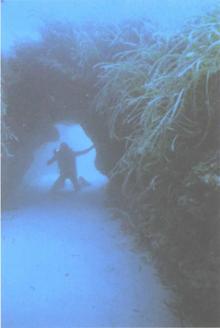 Underworld: The Mysterious Origins of Civilization
Underworld: The Mysterious Origins of Civilization The Master Game: Unmasking the Secret Rulers of the World
The Master Game: Unmasking the Secret Rulers of the World America Before
America Before Entangled
Entangled War God: Nights of the Witch
War God: Nights of the Witch War God: Return of the Plumed Serpent
War God: Return of the Plumed Serpent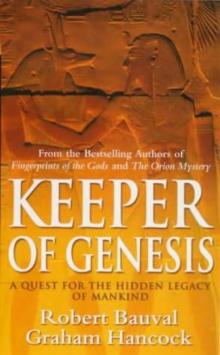 The Message of the Sphinx AKA Keeper of Genesis
The Message of the Sphinx AKA Keeper of Genesis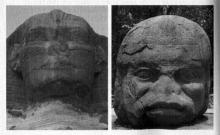 Fingerprints of the Gods
Fingerprints of the Gods The Sign and the Seal
The Sign and the Seal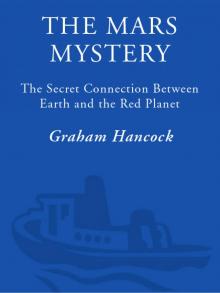 The Mars Mystery: The Secret Connection Between Earth and the Red Planet
The Mars Mystery: The Secret Connection Between Earth and the Red Planet Magicians of the Gods: The Forgotten Wisdom of Earth's Lost Civilization
Magicians of the Gods: The Forgotten Wisdom of Earth's Lost Civilization War God
War God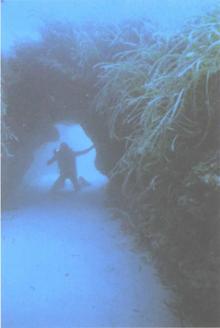 Underworld
Underworld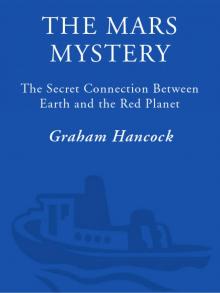 The Mars Mystery
The Mars Mystery Magicians of the Gods
Magicians of the Gods The Master Game
The Master Game